The cost of neutering or spaying a dog varies based on several factors, including the geographical location, the age and size, and the type of facility performing the procedure (such as a private veterinary clinic or a low-cost spay/neuter clinic). On average, neutering a male dog can cost anywhere from $50 to $300.
Spaying a female dog can cost anywhere from $50 to $500. However, it’s critical to remember that these are rough estimates, and the actual cost can be higher or lower in your area. It’s best to consult a veterinarian or call local clinics for a more accurate estimate.

Neutering vs. Spaying a Dog
Neutering and spaying refer to surgical procedures performed on male and female dogs, respectively, to prevent them from reproducing. In neutering, a male dog’s testicles are removed, while a female dog’s ovaries and uterus are removed in spaying. These procedures are typically performed to reduce pet overpopulation, prevent certain health problems, and modify behavior.
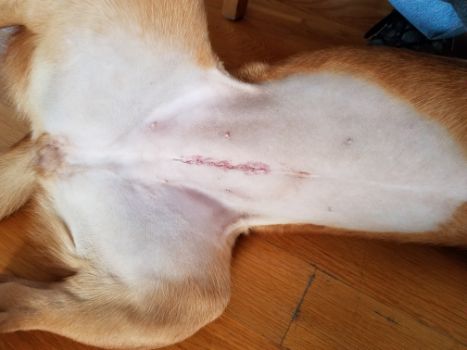
Factors that Affect Neutering or Spaying Costs
Dog Size and Health
The size of a dog can affect the cost of neutering or spaying because larger dogs typically require more anesthesia and a longer procedure. The dog’s age can also affect the cost, as older dogs may have more health issues that must be addressed before or during the procedure. Smaller breeds may have a lower cost for the procedure than larger ones.

Previous Health Conditions
Previous health conditions, such as heart or lung problems, can affect the cost of neutering or spaying because additional precautions may need to be taken during the procedure to ensure the dog’s safety. The presence of any pre-existing health conditions may also require additional tests or treatments that can increase the cost of the procedure.

Location
The cost of neutering or spaying can also be affected by the geographical location. For example, the cost may be higher in urban than in rural areas due to higher operating costs for veterinary clinics.
Vet Fee
The cost of neutering or spaying can also be affected by the fee charged by the veterinarian. Some vets may charge higher for their services due to their experience, expertise, or the type of facility they work in. It’s important to shop around and compare prices from different veterinary clinics to find the best deal.
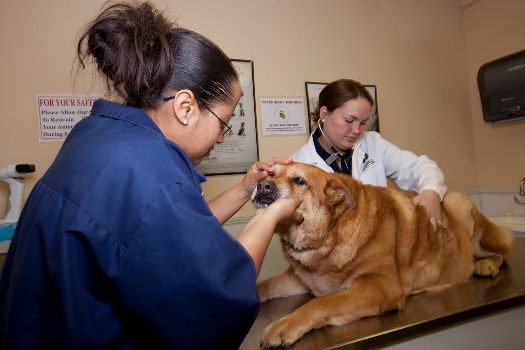
What’s Included in the Cost of Spaying or Neutering a Dog?
The cost of spaying or neutering a dog can vary depending on several factors, but it generally includes the following.
Pre-surgery examination
Before the procedure, the dog will undergo a comprehensive physical examination to ensure they are healthy enough for surgery.
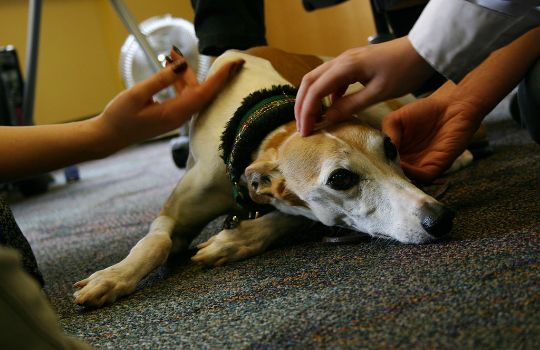
Anesthesia
Anesthesia is required for the procedure, and the cost of the anesthesia and monitoring during the procedure are typically included in the cost.
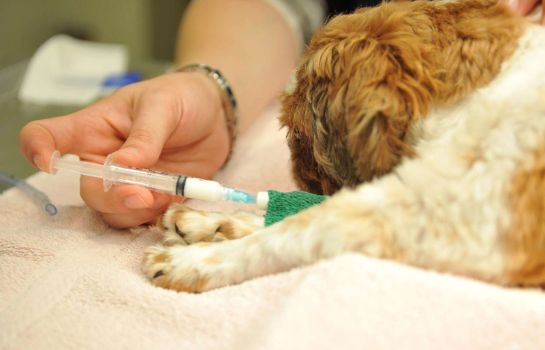
Surgery
The cost of the surgical procedure itself is included in the estimate.
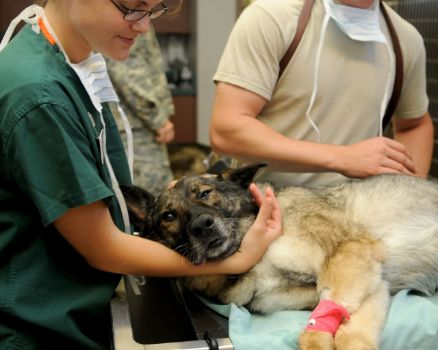
Pain management
Pain management medications to help the dog recover from the procedure comfortably are also included in the cost.

Post-surgery examination
After the procedure, the dog typically receives a post-operative examination to ensure they recover as expected.
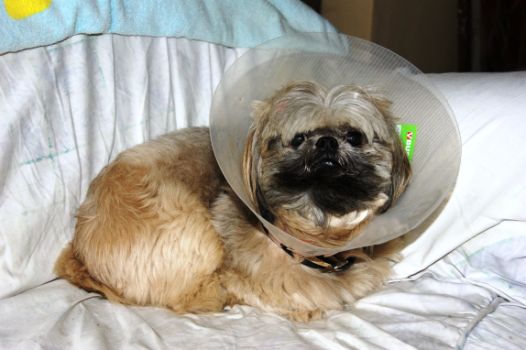
Follow-up care
Some clinics may include a follow-up visit to check on the dog’s progress and answer any questions the owner may have.
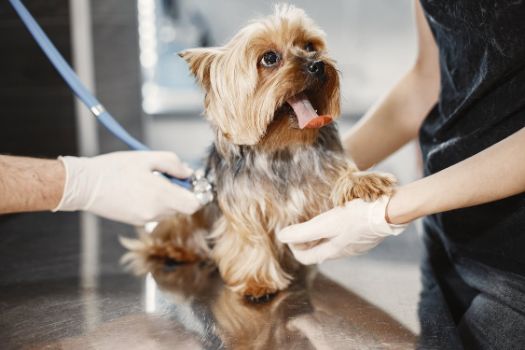
Miscellaneous supplies
Other supplies, such as an Elizabethan collar to stop the dog from licking the surgical site and any laboratory tests required before or after the procedure, may also be included in the cost.
When Should I Neuter or Spay My Dog?
The optimal age for neutering or spaying a dog can vary depending on several factors, including the size and breed of the dog. Smaller dogs generally reach sexual maturity faster and can be spayed or neutered at an earlier age than larger dogs. For small to medium-sized breeds, such as the Chihuahua or the Beagle, spaying or neutering them at around 6 to 9 months of age is typically recommended.
Larger breeds, such as the Labrador Retriever or the German Shepherd, can take longer to mature and may not be ready for spaying or neutering until they are around 1 to 2 years of age. In these breeds, waiting until they have reached their full size is important to ensure that the procedure does not interfere with their growth and development.
It is important to discuss with a vet to determine the time to spay or neuter your dog, as some breeds may have specific health concerns that need to be considered when making this decision. Additionally, the veterinarian may also consider the dog’s health and lifestyle when making a recommendation.
Benefits of Spaying or Neutering a Dog
Medical benefits
Spaying or neutering a dog can help to prevent certain medical conditions such as testicular cancer in males and breast cancer, pyometra, and ovarian cancer in females.

Reduced risk of roaming and fighting
Intact dogs, both male, and female, have a strong drive to roam in search of a mate. This can increase exposure to dangers such as traffic and fights with other animals. Neutered and spayed dogs are less likely to roam and are less aggressive toward other animals.
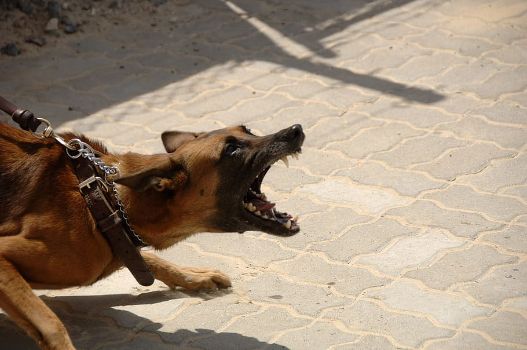
Behavioral benefits
Neutering or spaying a dog can help to reduce or eliminate certain behavioral problems, such as urine marking in males and roaming and yowling in females.
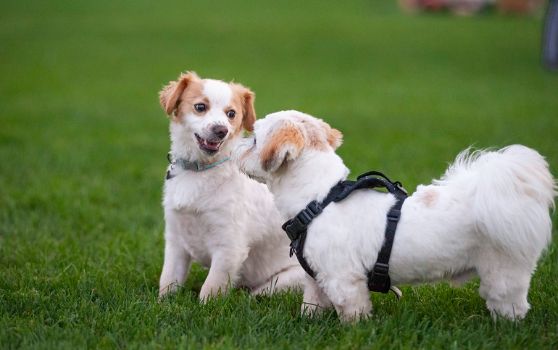
Population control
One of the biggest benefits of spaying or neutering a dog is that it helps to control pet overpopulation. This reduces the number of unwanted dogs and helps ensure that every dog has a loving and responsible home.

Improved health and longevity
Spaying or neutering a dog can also help to improve their overall health and increase their lifespan. Studies have shown that neutered and spayed dogs are less likely to develop certain health problems and live longer healthier lives.

How can I Help my Dog recover from Neutering and Spaying?
Keep them calm and confined
It is important to keep your dog quiet and confined for a few days after the procedure to allow them to recover. This means avoiding strenuous activity and limiting their access to stairs.
Provide a comfortable and warm place to sleep
Your dog will need a comfortable and warm place to sleep, such as a dog bed or blanket, to help them recover from the procedure.
Offer small, frequent meals
Offer your dog small, frequent meals rather than regular portions to help them recover from the procedure. This will help to reduce the risk of nausea and vomiting.
Administer pain management medication
If your dog has been prescribed pain management medication, it is important to administer it as directed to help them recover from the procedure.
Keep the surgical site clean and dry
Keeping the surgical site clean and dry is important to reduce the risk of infection. Avoid allowing your dog to lick or chew at the site and keep them from getting wet.

Frequently Asked Questions
Is it ethically wrong to Neuter or Spay Dogs?
The decision to neuter or spay a dog is personal and can be based on various factors, including population control, health concerns, and behavioral issues. While some people believe that neutering or spaying a dog is unethical, many veterinarians and animal welfare organizations believe that these procedures can help improve dogs’ overall health and well-being.
Does Dog Insurance Cover Neutering or Spaying Costs?
It depends on the insurance policy. Some dog insurance policies may cover the cost of neutering or spaying, while others may not. It’s important to carefully review the terms and conditions of your insurance policy to determine what is covered. Generally, routine procedures such as neutering or spaying are usually covered under most insurance policies.
Are Spayed or Neutered Dogs more costly than Other Dogs?
Spayed or neutered dogs are not more expensive than other dogs. While there may be an initial cost associated with the procedure, neutering or spaying a dog can help to reduce long-term veterinary costs by preventing certain health problems and reducing the risk of accidents.
Why is Spaying More Costly than Neutering?
Spaying is typically more expensive than neutering because it is a more complex surgical procedure. The procedure involves removing the ovaries and uterus of a female dog, which requires a larger incision and a longer recovery period compared to neutering a male dog. Additionally, the cost of spaying can also be affected by factors such as the dog’s size, the clinic’s location, and the fee charged by the veterinarian.